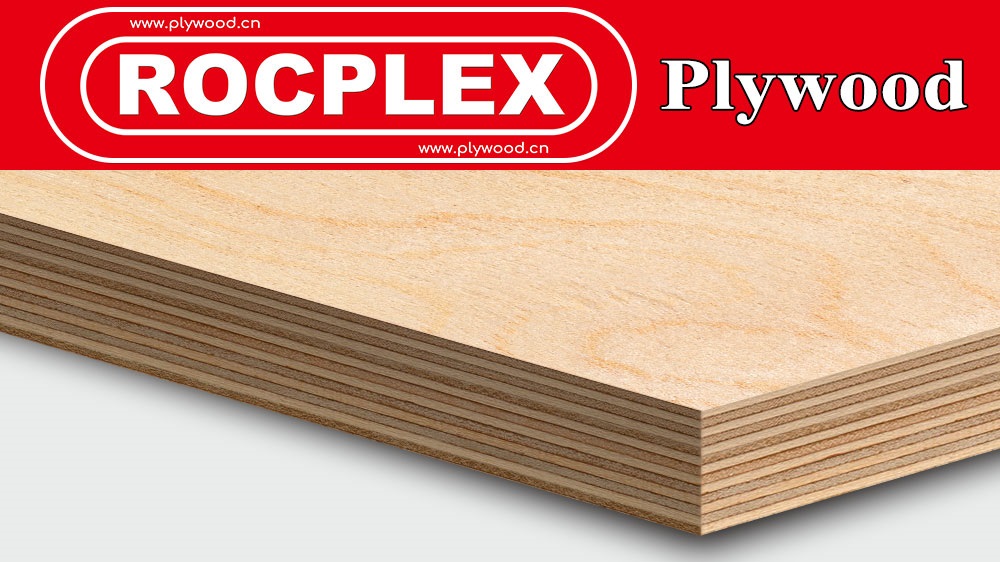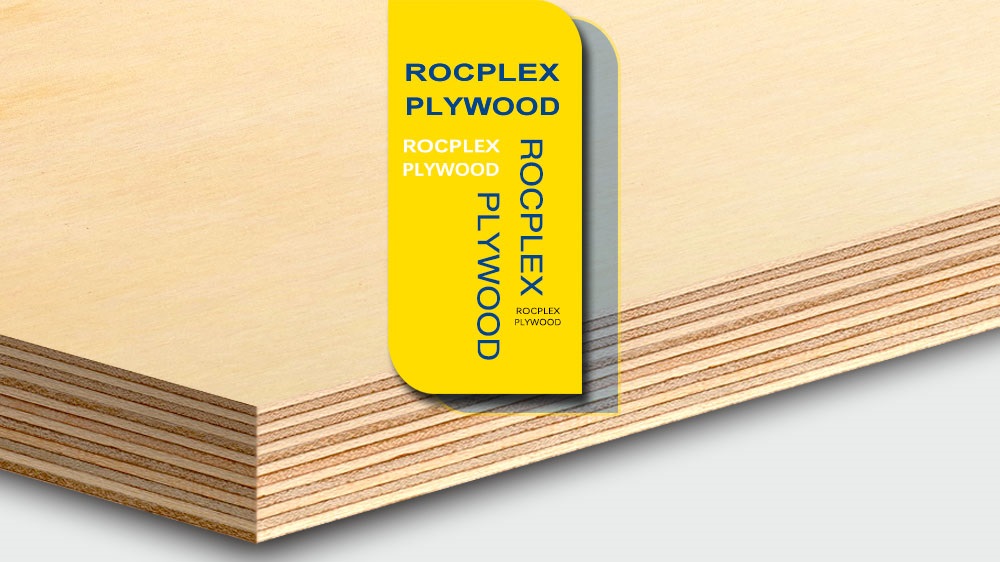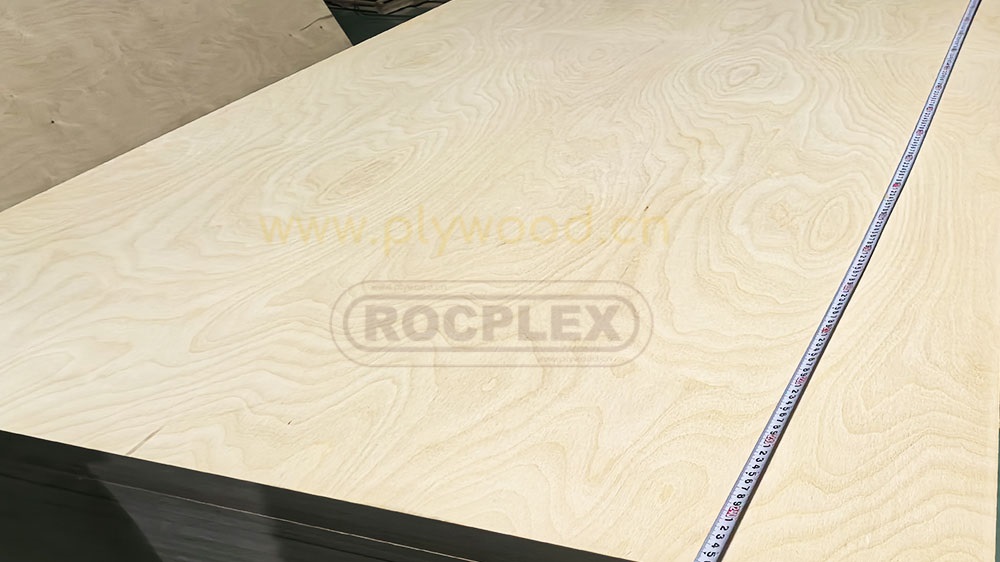What is laminated panels?
Laminated panels are engineered surfaces composed of layered materials bonded under heat and pressure. They feature thin sheets of wood-based fibers or particles, sealed beneath decorative layers. This structure creates panels that resist warping and distortion. Each layer contributes to stability, ensuring a uniform appearance. Manufacturers choose adhesives designed to endure moisture and wear. The outcome is a consistent, durable material that suits varied applications. laminated panels often offer scratch resistance, easy cleaning, and reliable strength. Designers appreciate their adaptability, using them in cabinetry, walls, and countertops. They are known for precise sizing and smooth finishes. Over time, laminated panels have gained popularity in both residential and commercial projects. They balance aesthetics, durability, and value, becoming a go-to choice for many builders.
Laminated panels and Structural Benefits
Laminated panels provide reliable strength for diverse projects. Their layered composition enhances load-bearing capacity. Builders rely on them for stable cabinetry frames and furniture components. Unlike solid wood, these panels resist twisting. This reduces stress on joints. Even under humid conditions, surfaces stay flat. Contractors trust them to maintain structural integrity over time. Many appreciate the predictable thickness that simplifies cutting and fitting. This consistency supports precision in assembly. As a result, installations proceed smoothly. The layered design improves dimensional stability, ensuring that surfaces remain uniform. Such benefits extend the lifespan of fixtures and furnishings, reducing costly replacements.
Laminated panels Comparing to Solid Wood
Solid wood can vary in density and grain patterns. laminated panels eliminate such irregularities. Without knots or cracks, they create a cleaner finish. Builders gain flexibility when shaping edges or drilling holes. Less waste occurs because panels arrive ready for cutting. This efficiency saves labor and resources. Unlike lumber, panels maintain uniform strength across their breadth. The result is a smoother assembly process. Over time, fewer distortions arise. laminated panels simplify project planning and execution. Craftsmen can focus on details rather than correcting wood defects. The outcome is a polished result with fewer hidden flaws.
Understanding Material Composition of laminated panels
These products start with a core layer, often made of pressed wood fibers or particles. Veneers or decorative papers top this base. Heat and pressure bond these layers into one solid sheet. laminated MDF panels exemplify this approach. They rely on medium-density fibers to create stable cores. Similarly, laminated plywood panels combine thin wood veneers, laid in alternating directions. This cross-lamination improves rigidity. high pressure laminate panels use advanced resins that seal each layer. The bonding creates a tight structure that resists splitting. decorative laminated panels showcase patterns, colors, or textures on their surfaces. Each variation meets specific design or performance requirements. Collectively, these methods ensure a wide range of options.
Balancing Durability and Appearance
Manufacturers invest in quality adhesives and resins. This ensures panels resist peeling or bubbling. Surfaces remain smooth, even after years of use. Some incorporate laminate wall panels for vertical applications. These variants withstand minor impacts, maintaining a fresh look. Others opt for laminated veneer panels that highlight wood grains. Whether sleek or textured, each finish must endure handling and cleaning. Manufacturers balance aesthetics with toughness. The result is a material that satisfies architects, builders, and clients. The ability to choose from different finishes enhances design creativity. No matter the style, durability remains a core asset.
laminated panels in Interior Design
Interior designers value these panels for their versatility. They harmonize with modern or classic settings. laminated wood panels integrate natural warmth into spaces. Their neutral tones blend with various color schemes. Light-reflective surfaces brighten rooms, making them feel more spacious. Panels line walls, serve as cabinet fronts, or form stylish partitions. The uniformity of panels simplifies cohesive design schemes. Without random knots or grain shifts, designers gain predictability. This predictability ensures that final spaces appear polished. Clean lines and smooth finishes match contemporary trends. Even bold patterns remain stable and crisp. laminated panels allow creativity without sacrificing practicality.
Tailoring Spaces with Custom Finishes
Clients seek unique appearances. laminated panels offer a range of textures, from matte to glossy. Some prefer laminate wall panels that mimic stone or metal. Others choose patterns inspired by fabrics. The market provides countless decorative laminated panels. Designers can match panel finishes to flooring, upholstery, or fixtures. This alignment creates a unified environment. Since panels are dimensionally stable, installing large surfaces is simpler. Pre-finished options reduce the need for on-site painting or staining. This saves time and cuts down on volatile fumes. The outcome is a neat, tailored look with minimal effort.
Applications in Residential Spaces
Homeowners benefit from panels in kitchens, living rooms, and bedrooms. Cabinets made from laminated MDF panels resist moisture, safeguarding stored items. Countertops remain easy to clean, requiring only mild wiping. Walls gain character with laminate wall panels that stand up to everyday scuffs. Children’s rooms become safer when surfaces resist splinters. The reduced maintenance appeals to busy families. Entertainment units endure heavy use without showing wear. Panels can create accent walls, adding interest without overwhelming budgets. In open-plan designs, consistent paneling ensures smooth transitions. laminated panels unify various areas, making homes feel cohesive. Over time, homeowners appreciate surfaces that look new, year after year.
Enhancing Value and Comfort
Durable interiors often boost property value. Potential buyers see well-maintained surfaces and trust the home’s quality. laminated plywood panels reinforce floors that withstand foot traffic. Bathrooms benefit from moisture-resistant finishes that prevent swelling. Even closets and shelves remain tidy and stable. Over time, families enjoy interiors that need fewer repairs. The savings become clear as panels outlast less robust materials. Residential projects gain longevity, reducing environmental impact. With minimal upkeep, homeowners relax and focus on living. Comfort follows from consistent, appealing finishes. laminated panels help transform ordinary homes into personal retreats.
laminated panels and Durability Factors
Long-term performance matters. Panels must handle temperature changes, humidity, and daily wear. high pressure laminate panels excel under demanding conditions. They resist scratches, making them ideal for surfaces exposed to frequent contact. laminated veneer panels maintain structural integrity over time. This steady quality reduces the need for replacements. Manufacturers test panels against impacts and staining. Surfaces must not fade under normal lighting. With the right choice, homeowners and professionals enjoy reliable finishes. Durability reduces maintenance costs and landfill waste. By choosing sturdy panels, customers invest in long-lasting value. It’s a practical move that pays off in the long run.
Preventing Common Issues
Humidity often warps natural wood. laminated panels handle moisture better, thanks to stable cores. Edges remain sealed, blocking water entry. This prevents bubbling or peeling at corners. Panels that line kitchens or bathrooms maintain their shape. Minimal expansion ensures drawers and doors open smoothly. Surfaces resist forming dents or gouges. This resilience keeps interiors polished and inviting. Even under continuous use, the original luster survives. Cleaning is straightforward, involving mild detergents or damp cloths. Spills wipe away without leaving permanent marks. Each detail adds up, forming a dependable material suitable for various applications.
Laminated panel in Commercial and Hospitality Settings
Shops, restaurants, and offices benefit from these surfaces. Guests notice tidy finishes that convey a welcoming impression. Minimal maintenance suits busy environments. Clients appreciate stable colors that last for years. In hotels, paneling in lobbies or suites contributes to a warm ambiance. Designers rely on consistent quality to achieve brand standards. Custom patterns add personality without compromising durability. Managers value quick installation and easy replacements. Such efficiency lowers downtime, reducing revenue loss. Over time, professional spaces retain their polished look. Visitors encounter clean, well-crafted surfaces that enhance comfort. Architects and contractors save time by selecting panels that simplify complex projects.
Supporting Productivity and Aesthetics
Workers thrive in pleasant surroundings. Smooth surfaces reflect light, preventing gloomy corners. Noise reduction improves focus. laminated wood panels can help moderate acoustics, contributing to a quieter atmosphere. Offices appear professional, reassuring clients of quality. Meeting rooms feel more refined with well-finished walls. Even corridors and waiting areas gain character. Panels unify diverse elements, from desks to partitions. Commercial designers find them ideal for creating a cohesive identity. They choose decorative laminated panels that match corporate colors. Cohesive aesthetics strengthen branding. Over months and years, interiors remain fresh, reducing renovation costs. Such stability benefits both staff and clients.
Environmental Considerations and Sustainability
Sourcing responsibly matters today. Many manufacturers use certified wood fibers, ensuring forests remain healthy. The production process minimizes waste. Some producers recycle scraps for other products. This reduces landfill contributions. Adhesives comply with strict emissions standards. Users prefer materials that support greener goals. Over the product’s lifespan, stable surfaces need fewer replacements. This conserves resources in the long run. laminated veneer panels and similar variants often come from well-managed sources. Choosing such materials aligns with sustainable building practices. Clients gain peace of mind, knowing their selections respect the environment. As regulations evolve, makers adapt, improving processes for future generations.
Balancing Performance and Ecology
Durable boards last longer, lessening the strain on forests. Extended lifespans mean reduced demand for raw materials. Less frequent replacements also cut transportation emissions. When panels reach end-of-life stages, recycling options exist. Some facilities repurpose material into new products. This circular approach reduces environmental footprint. High pressure laminate panels often feature low-VOC finishes, improving indoor air quality. Builders who prioritize ecology find these products appealing. They combine aesthetic goals with responsible sourcing. Over time, sustainable choices gain popularity. Clients, tenants, and visitors appreciate eco-conscious decisions. The result is a balance between practicality and environmental stewardship.
Maintenance and Cleaning Tips for laminated panels
Routine care ensures long-lasting beauty. Wiping surfaces with mild cleaners removes dust and smudges. Avoid abrasive pads that might dull finishes. Gentle sponges or cloths work best. Mop floors with suitable cleaners, avoiding excessive moisture. Panels resist common stains, requiring less scrubbing. In kitchens, laminated MDF panels remain easy to sanitize. Bathrooms stay fresh with minimal effort. Periodic inspections confirm that edges remain sealed. Prompt attention to small issues prevents bigger problems. Owners appreciate that maintenance does not demand special expertise. Few materials offer such an effortless care routine. By following basic guidelines, interiors stay pristine for years.
Troubleshooting Minor Issues
Accidents happen. A scratch may appear from moving furniture. Light sanding and compatible touch-up kits can restore surfaces. If water pools, wiping promptly prevents swelling. Even laminate wall panels recover if moisture is not allowed to linger. Protective mats under hot pans avoid heat damage. Regular monitoring ensures no hidden damage spreads. By addressing concerns early, owners prevent costly repairs. Simple steps keep the product performing at its best. Unlike materials that require refinishing or varnishing, panels need less intensive treatment. Over time, users appreciate this manageable upkeep. It supports a hassle-free environment.
Comparing Costs and Long-Term Value
Initial prices vary, but overall value emerges over time. laminated plywood panels and related types often cost less than premium hardwood. Installation is faster, cutting labor expenses. Reduced maintenance saves future funds. Upgrades or refinishing become rare. Lower long-term costs satisfy budget-conscious planners. Over a building’s lifespan, these investments pay off. Professionals know that fewer replacements mean stability in schedules and finances. Durable panels preserve interiors, increasing property appeal. Potential buyers notice well-maintained surfaces that need no immediate overhaul. This can improve resale values. By comparing short-term spending with long-term benefits, buyers grasp real savings. The math often favors reliable, stable materials.
Factoring in Aesthetics and Durability
A cheap material that warps quickly offers no real savings. Conversely, steady surfaces justify their price over decades. Even at mid-range costs, panels outperform lesser alternatives. Clients enjoy consistent quality without ongoing repairs. laminated MDF panels, for example, deliver a smooth finish that endures. The ability to choose textures and colors also matters. Timeless designs withstand changing trends. Spaces age gracefully, reducing the urge to remodel frequently. Balancing cost, appearance, and performance leads to sound decisions. Professionals rely on trusted options rather than gambling on unknown products. The result is peace of mind and stable budgets.
Laminated panels Installation and Best Practices
Proper handling ensures optimal outcomes. Store panels flat, away from direct moisture or sunlight. Acclimatizing materials reduces expansion issues. Measure twice, cut once. Sharp blades prevent chipping edges. Contractors secure panels with appropriate fasteners. Aligning corners accurately avoids gaps. Skilled installers follow manufacturer guidelines, ensuring warranties remain valid. For vertical applications, laminate wall panels attach cleanly to prepared substrates. Horizontal surfaces must rest on sturdy bases. Reinforced structures handle weight without sagging. While professional installation is recommended, experienced DIYers can succeed. Simple instructions guide step-by-step processes. When done correctly, installations progress smoothly. The result is a flawless finish that boosts any project.
Enhancing Project Efficiency
Time saved during installation translates to reduced labor costs. Panels with consistent thickness fit seamlessly. Less trimming means fewer errors. This efficiency benefits contractors and clients alike. Deadlines become easier to meet. Workers face less frustration adapting to inconsistent materials. The final look is cohesive, raising satisfaction. Even large projects finish on schedule. Repeated success builds confidence in the product. Over multiple jobs, professionals refine techniques. They learn to maximize panels’ advantages. Smoother workflows encourage repeat use. Everyone profits from simpler, faster installations that meet or exceed expectations.
Innovations and Emerging Trends
Manufacturers explore new finishes, textures, and colors. Digital printing technology offers limitless patterns. Some panels mimic exotic timbers or rare stone, broadening design choices. New coatings improve scratch resistance. Research focuses on sustainable adhesives and core materials. Engineers refine laminated veneer panels to enhance stability. High pressure laminate panels evolve for specialized applications. Thinner profiles reduce weight, easing transport and fitting. Smart surfaces may emerge, resisting fingerprints or repelling bacteria. As trends shift, panels adapt. Architects and designers gain exciting tools. Each innovation raises performance and aesthetic standards. The future promises even more versatile and durable solutions.
Meeting Modern Expectations
Customers expect more than just durability. They want beauty, function, and environmental responsibility. Panels must keep up with these demands. Ongoing research improves quality and compliance. Stricter standards mean safer indoor air. The market responds to new tastes and cultural influences. Decorative laminated panels must capture current styles. The industry listens, integrating user feedback. Manufacturers launch new product lines regularly, refreshing options. As needs evolve, the product stays relevant. This flexibility ensures these surfaces remain a top choice in construction and design. Each improvement cements their place in homes, offices, and public spaces worldwide.
Laminated panels Frequently Asked Questions (FAQs)
Q: Are these panels suitable for kitchens or bathrooms?
A: Yes. Choose moisture-resistant varieties and ensure proper sealing.
Q: Can I install them myself without professional help?
A: With proper tools and instructions, experienced DIYers can achieve good results.
Q: How do I clean the surfaces?
A: Use mild cleaners and soft cloths. Avoid abrasive pads.
Q: Do they support heavy loads in furniture?
A: Properly chosen panels handle normal furniture weight without sagging.
Q: Can I find panels with custom patterns or textures?
A: Yes. Many manufacturers offer a range of finishes, colors, and prints.
Q: Are they environmentally friendly?
A: Many producers follow sustainable practices, using certified wood and low-emission adhesives.
Post time: Feb-04-2025




